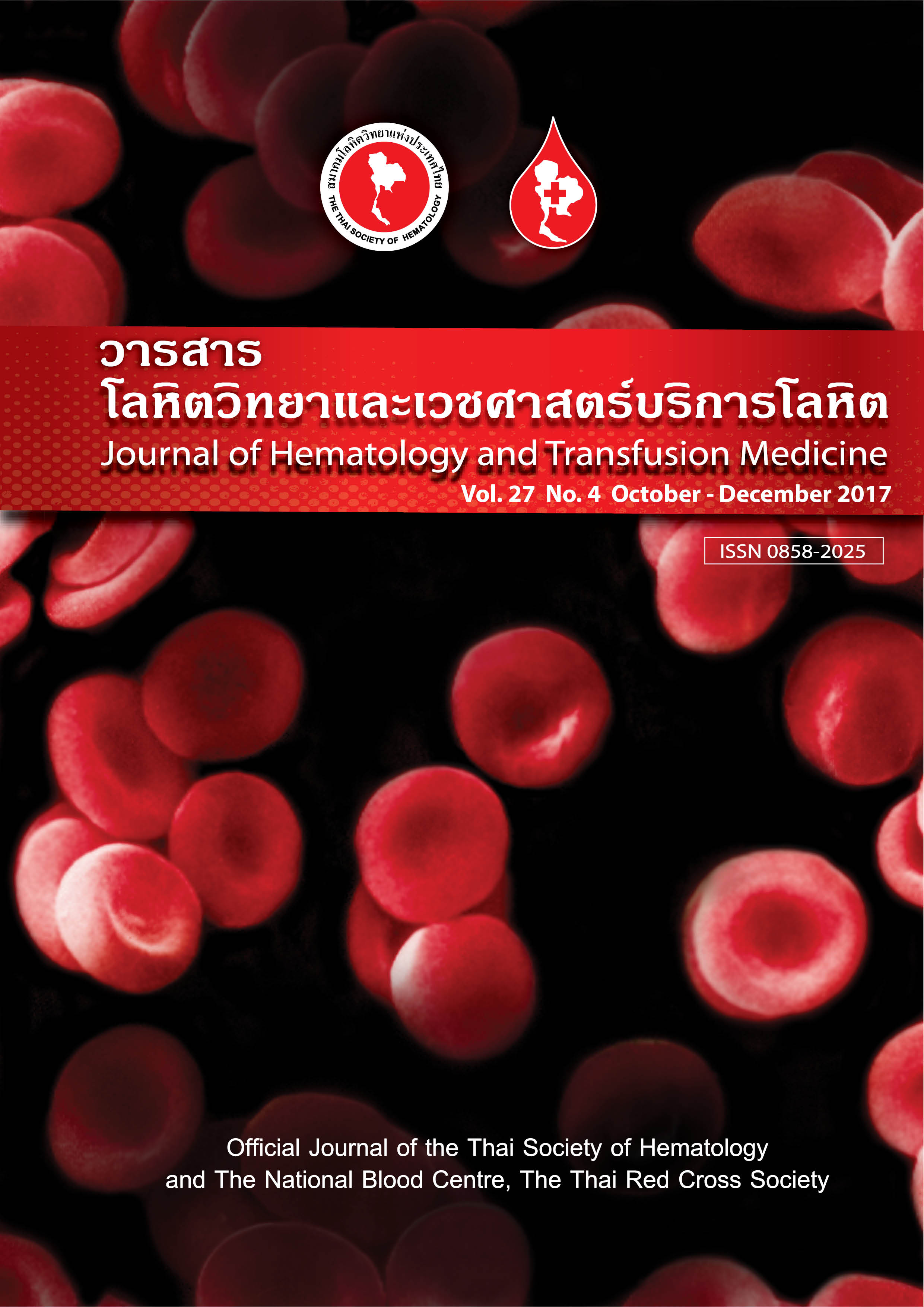Effects of Thrombopoietic Growth Factors on Megakaryocytopoiesis in Post-splenectomized Thalassemic Patients with Thrombocytosis
Keywords:
Megakaryocytopoiesis, Thalassemia, Thrombopoietin, Thrombocytosis, SplenectomyAbstract
Thrombocytosis is a frequently documented complication among postsplenectomized thalassemic patients (Thal/postsplenec).1 To elucidate the possible causes of high platelet counts among these patients, growth and development of marrow mononuclear cells to generate colony forming unit-megakaryocytes (CFUMeg) were investigated. All patients with Thal/postsplenec had notably high platelet counts (> 500 x 10 9/L) similar to those with chronic myeloproliferative disorders (MPD) and reactive thrombocytosis, whereas the platelet counts in nonsplenectomized thalassemic patients (Thal/nonsplenec) were comparable to those of the control. Using plasma clot culture in the absence of exogenous growth factors, the spontaneous growth of CFU-Meg appeared only in MPD whereas none was found in the other groups. In the presence of interleukin -3 (IL-3) and thrombopoietin (Tpo), the morphological features of the growing CFU-Meg in Thal/postsplenec were similar to those in controls and Thal/nonsplenec in which IL-3 stimulated the proliferation of immature megakaryocytes. Tpo alone stimulated differentiation and maturation of megakaryocytes. The response to IL-3 and Tpo stimulation in all groups showed concentration-related effects with a similar extent of responses, indicating that the elevated platelet counts in Thal/postsplenec were not associated with spontaneous growth or hyperresponsiveness of the stem cells to growth factors. However, serum Tpo levels in Thal/postsplenec were significantly elevated. These results suggest that the elevation of Tpo in Thal/postsplenec might be a major factor contributing to the high platelet counts among Thal/postsplenec patients.



